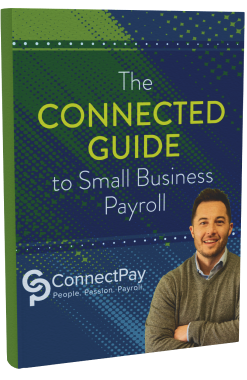Year-End Payroll Preparation: Your Essential Checklist

The end of 2025 is coming fast — especially for payroll teams. Between final pay runs, closing out tax records, and gearing up for next year’s compliance changes, this season brings the heaviest workload. The smart move is to build your team’s year-end strategy now so you’re ready when the work starts piling up. Here’s a practical checklist to help your team finish the year without costly surprises.
Verify Employee Information
Before you send out W-2s, make sure the personal and tax data in your payroll system is accurate:
- Names & Social Security Numbers: Match exactly as shown on Social Security cards.
- Addresses: Update for employees who moved during the year. Outdated addresses can delay tax forms.
- Filing Status & Allowances: Check W-4s for accuracy. Ensure any midyear changes are captured.
Payroll Tip: Use the SSA’s Social Security Number Verification Service to avoid mismatches.
Reconcile Payroll Records
You’ll want to cross-check your payroll reports with quarterly Form 941s and year-to-date totals.
- Match gross wages, taxable wages, and tax withholdings in payroll software with IRS filings.
- Ensure totals match your accounting ledger and bank statements.
- Resolve discrepancies now. Waiting until tax season will only compound the issue.
Payroll Tip: Even small mismatches can trigger IRS notices.
Review Taxable Fringe Benefits
Certain benefits must be reported as taxable income and included in W-2 totals.
- Common taxable benefits: Group-term life insurance over $50,000, personal use of a company car, relocation expenses, and non-cash awards.
- Timing matters: Add these amounts to the final pay period so taxes are withheld correctly.
Example: If an employee had $1,500 worth of personal vehicle use, it must be added to taxable wages before year-end.
Confirm Retirement Plan Contributions
Make sure employee 401(k) or SIMPLE IRA contributions and employer matches are correct.
- Verify contributions don’t exceed IRS annual limits.
- Ensure catch-up contributions for employees age 50+ are properly tracked.
- Confirm employer match formulas have been applied consistently.
IRS limit for 2025: $23,500 for 401(k) deferrals, plus $7,500 catch-up for eligible employees. If between the ages of 60 and 63, the catch-up amount increases to $11,250.
Audit Tips, Overtime & Special Pay
Year-end is the perfect time to review compliance with wage laws.
- Double-check overtime calculations meet federal and state requirements.
- Ensure tips have been properly recorded.
- Review bonuses, commissions, and special pay for proper taxation and reporting.
Note: The IRS will publish more information in early fall on how to report income tax-exempt overtime and tips to comply with the One Big Beautiful Bill. (The IRS has already announced that there will be no changes to 2025 Form W-2s and 1099s.)
Handle Final Pay Runs Carefully
If your last pay date falls in January, but covers December work, confirm how your system reports it.
- Wages are reported in the year they are paid, not the year they were earned.
- Check that payroll cutoff dates align with reporting requirements.
Prepare and Distribute Year-End Forms
The most visible part of year-end payroll is getting tax forms into the hands of employees and contractors.
- Form W-2: Due to employees by January 31.
- Form 1099-NEC: Due to contractors and the IRS by January 31.
- E-file when possible. Not only does e-filing reduce errors and speed up confirmation, for most businesses it’s now mandatory.
File Year-End Tax Returns
In addition to quarterly Form 941, year-end brings additional reporting obligations.
- Form 940: Annual Federal Unemployment Tax (FUTA) return.
- State reports: Varies by state. Check for special reconciliation forms.
Purge and Archive Records
Federal law requires you to keep payroll records for at least three years. Some states require longer.
- Store digital copies securely with backup.
- Shred any unnecessary physical documents with sensitive data.
Plan for 2026
Use your year-end review to make improvements.
- Adjust processes to prevent errors found during reconciliation.
- Review vendor contracts for payroll and benefits services.
- Train your team on new tax rules, minimum wage changes, or reporting requirements for the coming year.
Year-end payroll prep is a balancing act between accuracy, compliance, and timing. This checklist can keep you in control, prevent compliance headaches, and ensure a smooth transition into the new year.






